|
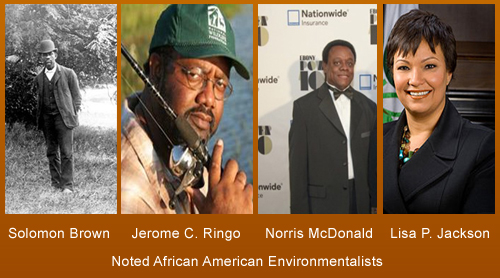
EARTH DAY
CULTURAL RESOURCES
Monday, April 22, 2013
Stacey M. Floyd-Thomas, Lectionary Team Cultural Resource Commentator and Michael R. Fisher Jr., Guest Cultural Resource Commentator
Michael is a community organizer and public policy advocate by training. He currently serves as the associate minister for the Christ African Theological Institute at Covenant Baptist UCC and is a graduate student in the Graduate Department of Religion at Vanderbilt University.
I. Introduction
Earth Day, which began in 1970, is an annual celebration intended to increase awareness and appreciation of the world that surrounds us, and serves as a reminder of the responsibility we have for the upkeep of the planet. While Earth Day has traditionally served as a celebration within a socioeconomic context, it is also an opportunity for Christian believers to engage in theological reflection on Godly stewardship of the earth’s natural resources. The writer of Psalm 24 had this very notion in mind. The author emphasizes our obligation as stewards of God’s creation. Thus, as persons of faith, we must be seriously concerned about the pollution of the air, soil, water, and other limited natural resources on which we are so dependent.
As African Americans, we should be particularly concerned about the state of the environment given that minorities—African Americans in particular—are disproportionately affected by the hazardous effects of environmental racism, which generally defined is the “racial discrimination in environmental policy-making and enforcement of regulations and laws, the deliberate targeting of communities of color for toxic waste facilities, the official sanctioning of the presence of life-threatening poisons and pollutants for communities of color, and the history of excluding people of color from leadership of the environmental movement.”1African Americans have a critical stake in advocating for environmental protections that protect earth’s natural resources because the health of our communities depends on it.
The African American community must take seriously the responsibility to care for the earth. This year, as we celebrate the 43rd anniversary of Earth Day on April 22, let us be mindful of the significance that Earth Day has for people of color and find ways to agitate others to join the chorus in advocating for solutions to various environmental justice issues, recognizing that service to the environment is also service to the God who created it.
II. Cultural Response to Significant Aspects of the Text
It has been presumed that African Americans have little interest or concern for the state of the environment. Care for the earth has largely been attributed to white activism emerging out of the 1960s and 1970s hipster movement in the United States. History, however, paints a different picture. African Americans’ consciousness of the relationship between humanity and nature actually predates the environmental movement in America. Voices like that of Mary L. Oberlin emphasized the interdependence between humanity and earth’s natural resources. Take for example an article entitled “Learn to Live on the Farm,” which appeared in a 1916 issue of the Negro Farmer and Messenger.In it, Oberlin says:
Successful living in any place depends upon the spiritual and mental attitude. One must be in sympathy with the natural environment in which he finds himself. The family on the farm must have a feeling of permanency. They must believe that it is the best place for them to live, the ideal place for a home, the place where the children have the best opportunity to develop strong bodies, sound minds, and the characteristics that make for efficiency. They must be open minded and try to learn whatever they can that will improve farm conditions… When they are convinced of these things, the birds, and all the rest, the dawn, the early morning [odor], and to find each part of the day, each twilight, and each nightfall filled with wonders, they will know how to live on a farm and how to make a living on a farm will be less of a problem.2
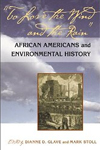 |
Here, an African American woman acknowledges the sacred relationship between one’s mind, body, and with nature. Oberlin demonstrates what Dianne D. Glave and Mark Stoll call “an agricultural evangelism.”3 In To Love the Wind and the Rain”: African Americans and Environmental History, Glave and Stoll explore through a collection of essays the long history of African American environmentalism in the United States, dating as far back as institutional slavery in the American South.4 |
Black religion has held particular significance to environmental activism. In an essay titled “Religion and Environmental Activism,” Mark Stoll acknowledges that black churches have played rallying roles in communities threatened by environmental hazards.5 He says, “The centrality to African American environmental activism stands out in strong contrast to other comparable social groups. Despite the examples of Pat Robertson and Jerry Falwell, no other ethnic, social, or religious group has as strong a tradition of clerical political activism.”6 For African American communities, environmental issues have been most pronounced in the context of pressing social justice issues, i.e., environmental racism. Because black neighborhoods are statistically the most targeted sites of toxic waste, black religious institutions and other black organizations such as the NAACP have tackled environmental issues out of necessity for survival.
The annual celebration of Earth Day provides an opportunity to raise the collective consciousness of African American congregations as it concerns the intersection of environmental stewardship and social justice. The journey toward a cleaner, more sustainable earth continues. Earth Day should remind the African American community of its legacy of leadership in environmental activism and in the larger struggle for justice and equality in American society. In doing so, we honor creation, God, and the sacred in one another.
III. Audio Visual Aids
To aid in helping hearers remember the morning sermon and the message of the text, one may want to put in the bulletin/order of service, use on projector screens, or set up in various locations around the sanctuary:
- Images of pollution, such as pictures of the aftermath of the 1989 or 2010 oil spills in the Gulfs of Alaska and Mexico, could be inserted in the bulletin or placed on picture boards directly in front of the pulpit.
- Visual aids that represent waste, such as empty plastic bottles, empty cans, glass bottles, etc.
- Elements of nature and the four seasons could be integrated around the church, e.g., leaves growing on the trees, leaves falling from trees, snow-covered trees as an artistic representation of earth’s beauty, etc.
- An audio-visual clip from the DVD film Renewal: Stories from America’s Religious-Environment Movement7 to reinforce the message about the importance of the relationship between faith and environmental stewardship.

IV. Story or Illustration
On the 1989 Exxon Valdez Oil Spill
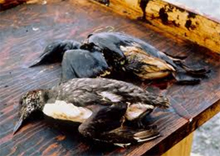 |
“What scientists . . . know now is that the legacy of the Exxon Valdez is still visible physically, on the beaches of Prince William Sound and in the animal populations in these sensitive waters that have yet to rebound fully.” These are the words of Bryan Walsh, a reporter for Time Magazine, who wrote a story about the lingering effects, twenty years later, of the Exxon Valdez oil spill on the environment in Prince William Sound, Alaska.8
On March 24, 1989, an oil tanker designated the Exxon Valdez was headed to Long Beach, California, when it struck a reef in the Gulf of Alaska off the coast of Prince William Sound, Alaska, resulting in the release of approximately 11 million gallons of crude oil into the Gulf. The Exxon Valdez spill is considered to be one of the worst human-caused environmental disasters in the history of the United States and was, until 2010, the largest one on record. More than twenty years later, while on the surface everything appears to have returned to normal, crude from the oil tanker can still be found beneath the beach sand on a number of the neighboring islands in Prince William Sound.
|
Walsh writes that scientists estimated that in 2009, approximately 20,000 gallons of oil still remained in the once-devastated area buried between five and twelve inches below the surface, a threat to all animal or plant life that may come into contact with it.9 The existence of oil in the environment more than two decades after the initial 1989 disaster serves as a grim illustration that human actions have lasting and potentially irreversible effects on the planet.
V. Making It a Memorable Learning Moment
This section offers possible congregational actions for Earth Day that bring together a vision for mission and a commitment to environmental stewardship.
Pledges
Have church members sign Earth Day pledges that affirm a commitment to demonstrating Godly stewardship of the earth, or put up a communal “pledge board” in a centralized location where members can write their environmental pledge for the year. The pledge board can be a creative activity where members write their pledges on paper leaves and place them on cut-out trees representing life and the environment.
Petitions/Letters to Politicians and Other Representatives
Petitions or letter-writing campaigns for elected officials is a useful way to engender investment in a cause and is also an awesome exercise in democracy. Tables can be set up before, during, and after service, encouraging congregants to sign their names to pre-drafted letters urging local, state, and national elected officials to enact public policies that protect the environment. This can also take the form of e-mail/call-in days during the week.
Community Clean-up Day
Hold a church-wide community clean-up day to give church members the opportunity to practice environmental stewardship. Members can commit to cleaning up entire neighborhoods or the grounds that surround the church. The goal here is to facilitate acts of stewardship for God’s creation that can also be framed as acts of worship. This can also be used as a church building exercise that encourages members to become acquainted with one another.
Day of Recycling
Sometimes simple actions are extremely effective in helping people to understand a concept. Consider having a church-wide recycling day. This does not require extensive planning or effort to pull off successfully, but it encourages church members to evaluate how they contribute to the pollution of the planet through unnecessary waste. Encourage the congregation to bring in glass, plastic, and other recyclable materials from their homes to the church in a communal effort to be better stewards of the planet. For extra fun, you can make it competitive to see which family or group brings in the most recyclable products.
Host an Environmental Action Forum
Your church, along with sister churches and other local organizations, can host an environmental action forum. Be certain to address problems that particularly affect your community and look for “action initiatives” and not just statements of the problem. Each organization present should pledge to determine the main environmental concerns for your community and establish timelines for addressing each concern. Make sure that youth are part of any forum that you hold. It would be great to create a DVD from the forum that can be used in neighborhood schools and can be shown to churches that did not attend the forum. Each group present should also provide access on its website to allow people to view the forum after it is held.
Feature Images and Bios of Environmentalist in your Church Bulletin
Few know of the long history of African American environmental history, and it is a history that is still being written today in a more robust way than ever. Use your church bulletin, each Sunday during the month of April or during another month, to educate your congregation about African American environmentalists past and present. Today’s main image features four important environmentalists—Stephen Bishop, Solomon Brown, Norris McDonald, and Lisa P. Jackson. Brief bios for each are provided below:
Solomon Brown built exhibit cases and studied natural history from 1852 to 1906 at the Smithsonian Institution. The first African American employee at the world-renowned museum, he also lectured about natural history in the Washington metro region.
Jerome C. Ringo is an advocate for environmental justice, clean energy, and quality jobs. He is a past chairman of the National Wildlife Federation and an associate research scholar and McCluskey Fellow for Conservation at Yale University.
Norris McDonald, in 1985, founded the African American Environmentalist Association. The group is focused on protecting the environment, utilizing natural resources economically, and bringing more blacks into the environmental movement.
Lisa P. Jackson was the Administrator of the U.S. Environmental Protection Agency (EPA) from 2009 to February 2013. She is the first African American to head EPA.
VI. Books and Journals to Enhance Your Understanding of Themes of Earth Day
The quarterly journal Environmental History is invaluable. Though the journal considers all times and places, most of the articles are about the United States, and many concern the history of environmental activism.
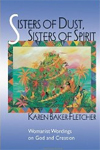 |
Baker-Fletcher, Karen. Sisters of Dust, Sisters of Spirit: Womanist Wordings on God and Creation. Minneapolis, MN: Fortress, 1998.
|
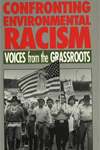 |
Bullard, Robert D., ed. Confronting Environmental Racism: Voices from the Grassroots. Cambridge MA: South End Press, 1993.
|
 |
Hayward, Steven F. Mere Environmentalism: A Biblical Perspective on Humans and the Natural World. Washington, DC: AEI Press, 2011.
|
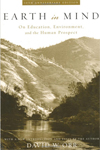 |
Orr, David O. Earth in Mind: Our Education, Environment, and the Human Prospect, 10th Anniversary Edition. Washington, DC: Island Press, 2004.
|
 |
Smith, Frank, ed. Conservation in the United States: A Documentary History [Five volumes]. New York: Chelsea House, 1971.Several scholars have put together excellent environmental-history readers for course use. The best collection of primary sources, however, is this classic reference work.
|
VII. Songs That Speak to the Moment
Celebration of Earth Day on this liturgical moment provides an opportunity for us to appreciate the beauty of the world that surrounds us and to honor and offer thanksgiving to God for the work of God’s hand. The three hymns below reflect such sentiments. The hymn writers give praise and thanks to God for earth’s beauty. But there are also expressions of humility, asking for divine help to curb humanity’s destructive tendencies. A sense of gratitude and awe overwhelms these hymns. We should not take for granted the majesty and glory of the earth.
Creator God
by Jenny Bailey
H&P 814, HON 134 (For All the Saints)
Creator God, your children’s voices rise,
Fed by your earth, uplifted by your skies,
Thankful for all its beauty and surprise,
Praise ever singing, ever singing.
Where forests range their canopies of trees,
May we sustain such vital gifts as these,
Let woodland shelter still resound with bees,
Birds ever singing, ever singing.
Beneath the moon the ocean lifts its tide,
Help us to curb our poisoned human pride
Still may the whales, the fish and dolphins ride,
Seas ever singing, ever singing.
From south to north, from deeps to thinnest air,
Kingdoms of creatures flourish everywhere,
Open our hearts and let us learn to share,
Life ever singing, ever singing.
God gave the word, and earth spins out in space,
Made us custodians of this glorious place,
Then let us give the future human race,
Worlds ever singing, ever singing.10
Creator God, You Made the Earth
by Carolyn Winfrey Gillette
ST. COLUMBA 8.7.8.7 (“The King of Love My Shepherd Is” PH #171)
Creator God, you made the earth,
A gift beyond comparing.
You called it good, you gave it worth,
You placed it in our caring.
You gave your gift of Sabbath rest,
Your pattern for creation.
You give us times to heal, to bless,
To join in celebration.
You give us Christ, who reconciled
The things of earth and heaven.
In him, you call each one your child!
What wondrous love you’ve given!
Because we’ve turned away from you,
Your world still needs your healing.
Creation longs to be made new
Through Christ, your love revealing.
God, by your Spirit, may we be
Communities of caring,
That as we’re healed, your world may see
The hope that we are sharing.11
Creator, We Thank You for All You Have Made
by Carolyn Winfrey Gillette
ST. DENIO (11.11.11.11) (“Immortal, Invisible, God Only Wise”)
Creator, we thank you for all you have made:
For trees by the sidewalk that give us cool shade,
For grass-covered ball fields, for flowers downtown,
For wide autumn leaves that turn crispy and brown.
God, thank you for gardens on back corner-lots,
For insects that hide out in old flower pots,
For lions and polar bears living in zoos,
For high mountain trails that have beautiful views.
God, thank you for rainfall that ends a long drought,
For cracks in the sidewalk where little weeds sprout,
For birds that build nests in the tops of the trees,
For hot summer days when we feel a cool breeze.
O God, we give thanks for the places we go,
For cool mountain lakes and for trails in the snow,
For each city park and for each county fair,
For gifts of creation we see everywhere.12
Notes
1. Holifield, Ryan. “Defining environmental justice and environmental racism.” Urban
Geography. 22 (1): 78–90.
2. Glave, Dianne D. and Mark Stoll, eds. “African American Environmental History: An Introduction.” “To Love the Wind and the Rain”: African Americans and Environmental History. (Pittsburgh, PA: University of Pittsburgh Press, 2006).
3. Ibid.
4. Stewart, Mart A. “Slavery and the Origins of African American Environmentalism.” “To Love the Wind and the Rain”: African Americans and Environmental History.
5. Stoll, Mark. “Religion and Environmental Activism.” “To Love the Wind and the Rain”: African Americans and Environmental History.
6. Ibid.
7. “Renewal: Stories from America’s Religious-Environmental Movement.” Online location: www.renewalproject.net.
8. Walsh, Bryan. “Still Digging up Exxon ValdezOil, 20 Years Later.” Time Magazine. Online location: http://www.time.com/time/health/article/0,,1902333,00.html (accessed 9 December 2012).
9. Ibid.
10. Bailey, Jenny. “Creator God.” Online location: http://www.christian-ecology.org.uk/hymn6.htm (accessed 9 December 2012).
11. Gillette, Carolyn Winfrey. “Creator God, You Made the Earth.” Online location: http://www.witherspoonsociety.org/a_creation_hymn.htm (accessed 9 December 2012).
12. Gillette, Carolyn Winfrey. “Creator, We Thank You for All You Have Made.” Online location:
http://www.carolynshymns.com/creator_we_thank_you_for_all_you_have_made.html (accessed 9 December 2012).
|